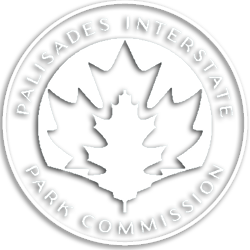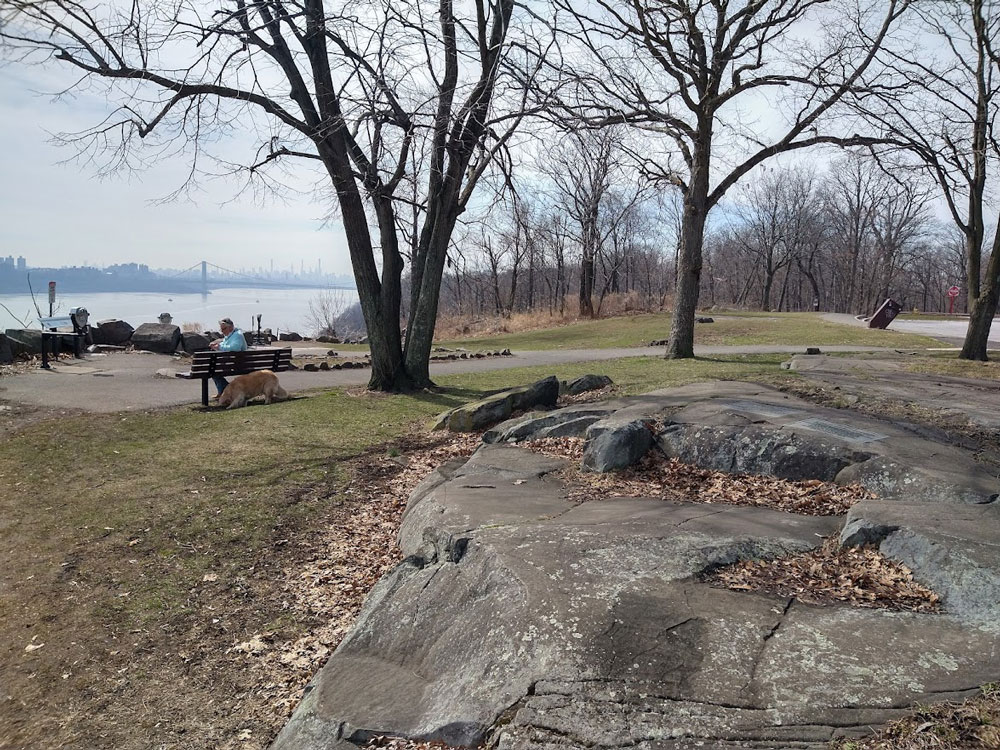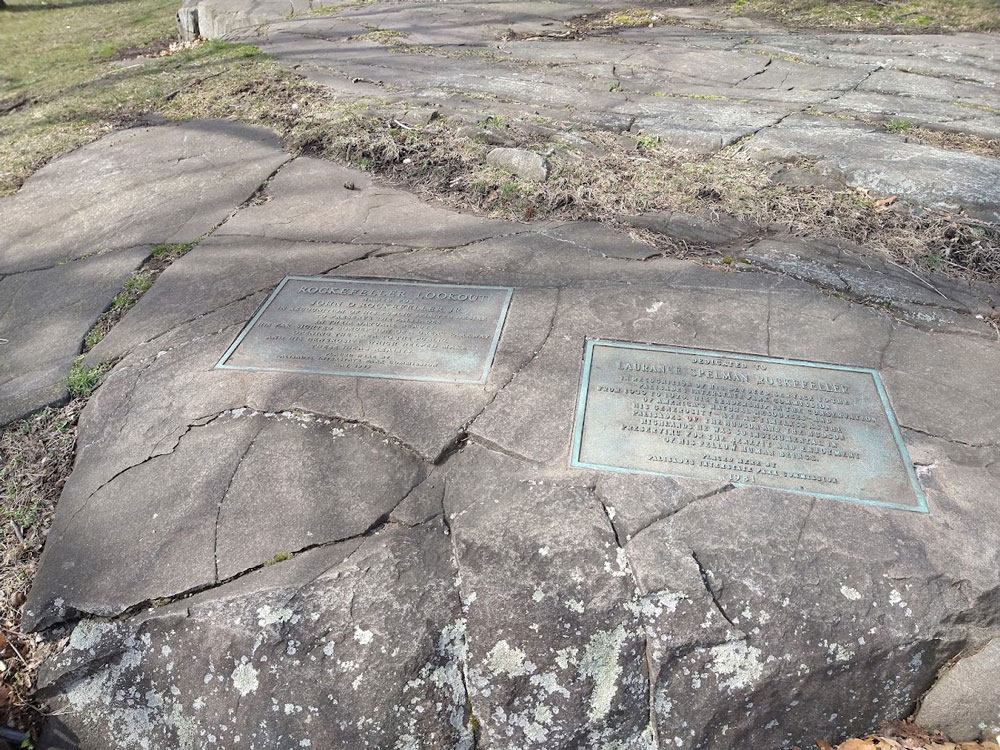An “Oft-Repeated Anecdote”
A “Cliff Notes” Story
March 2022
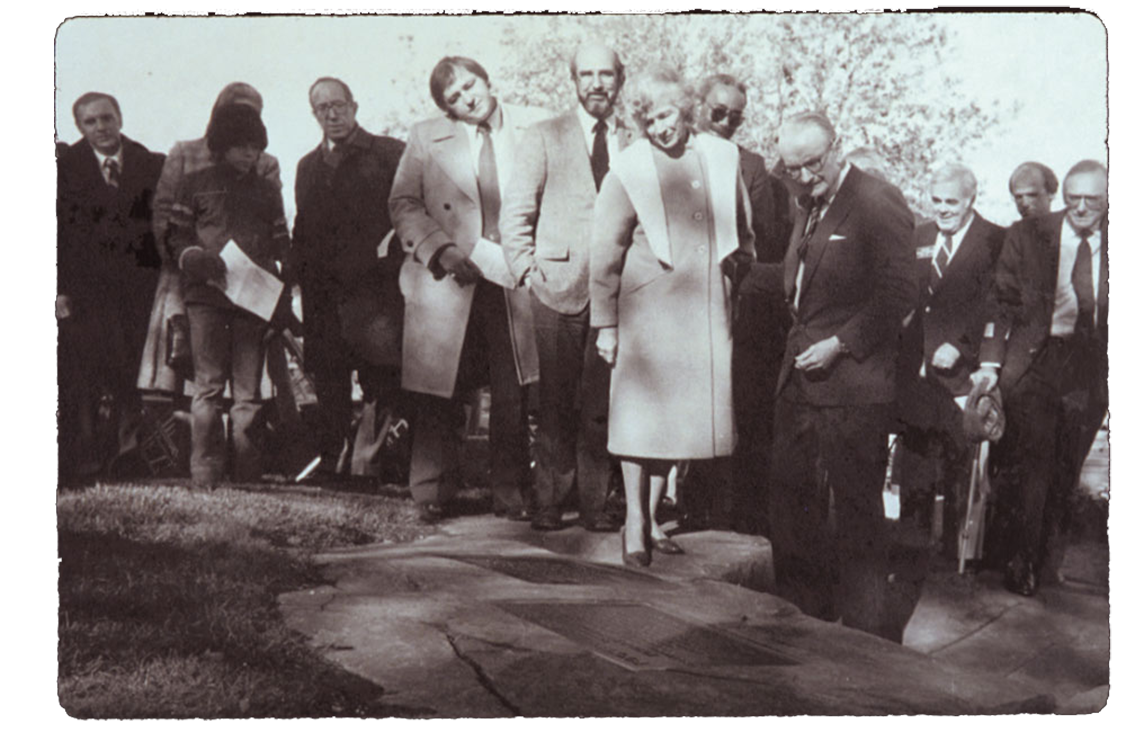
“Rockefeller made this park.” It’s something we hear regularly when we talk with visitors or at programs we give, a kind of park origin story with several versions. Sometimes we hear it claimed that “Rockefeller” bought up land along the Palisades of the Hudson to save his view from the family mansion. Other times the story suggests that “Rockefeller” simply wanted an undeveloped backdrop for the Cloisters. Whatever truth they may hint at, these statements oversimplify a much richer story. For one thing, the Rockefellers were one of many supporters of the creation of a park along the Palisades. For another, the stories often focus on one Rockefeller, when in fact both John D. Rockefeller (1838-1937) and his son, John D. Rockefeller Jr. (1874-1960), helped in the preservation of the Palisades — while the family has remained active in its support of the park to this day. The senior Rockefeller donated over half a million dollars early on (around $16 million in 2022). But it would be his son who is best remembered for his environmentalism and philanthropy, taking an active role in preserving land both here and across the country.
The push to save the Palisades started in New York City in the 1890’s, with the goal of stopping quarries from destroying the beauty of the cliffs along the opposite riverbank. This movement attracted the attention of the New Jersey State Federation of Women’s Clubs, who spoke out about the issue and lobbied local and state-level politicians, bringing public awareness to the destruction caused by the quarries. At this point in American history, a conservation movement was on the rise, and it had support from Democrats, Republicans, and other political parties. (In fact, most local chapters of Women’s Clubs had their members take an oath to be apolitical: they acted out of a sense of civic duty.) The combined efforts of the Women’s Clubs and organizations like the American Scenic and Historic Preservation Society helped create a groundswell of support for preserving the Palisades, and the Rockefellers were on board. The governors of New York and New Jersey, Theodore Roosevelt and Foster Voorhees, respectively, signed the Palisades Interstate Park Commission into being in 1900. The new Commission began acquiring the beleaguered cliff face and the riverfront land beneath. In 1909 the Commission formally opened those lands to the public.
Again, while the Rockefellers were heavily involved in the Palisades at the park’s inception, they were not the sole donors or spokespersons who wanted the Palisades saved. It was through the financial support of many wealthy investors, John Pierpont Morgan chief among them, the Women’s Clubs, and many others that the cliffs were preserved. The new park was an overwhelming success, attracting many thousands of eager visitors annually.
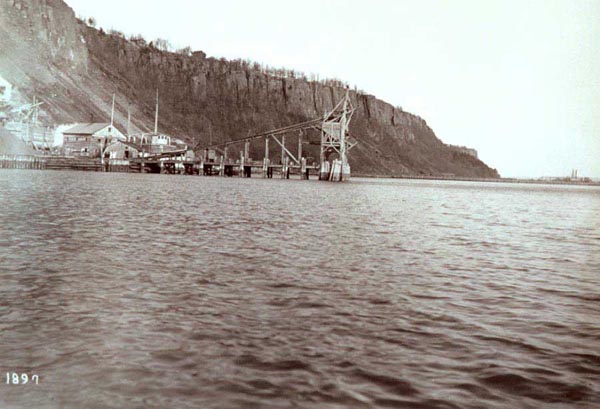

In the 1920’s, John D. Rockefeller Jr. stepped down from his roles at Standard Oil and J.P. Morgan’s U.S. Steel Company to begin a long passion-project of philanthropic work. At that time in his life, in today’s dollars, he was worth trillions. And it was at this point that he would play an instrumental role in the acquisition of land on top of the cliffs — land that remained in private hands at the time, much of it devoted to large summer estates for the rich and famous of the day, handsome cliff-edge manor houses sometimes referred to as “Newport on the Hudson.” These sleepy estates had been of little concern when the Park Commission was first created, when the emergency was to close down the quarries and save the cliff face. But how long could the bucolic scene on top of the cliffs last, once the George Washington Bridge opened in 1931? Once developers realized the potential for high rise development atop the cliffs?
As for Rockefeller Jr. wanting a mansion vista, these motives seem dubious, if not absurd. If the goal was a nice view across the river from their land, investing millions into Palisades land would not help the Rockefellers at all. Kykuit, their family estate, was in Westchester County, across the Hudson from the town of Nyack, New York. It’s strange that they sited their home across from developed land — if the goal was to get an unspoiled natural view. Not to mention that the estate itself was built in 1914, after the Rockefellers already supported the founding of the Palisades. The family had had a chance to think about where they wanted to place their home, yet they chose a location far from the new park they helped create.
Even as he bought land along the top of the Palisades via shell companies (to keep prices down) and donated it to the Palisades Interstate Park, Rockefeller Jr. also bought land in Upper Manhattan, opposite the Palisades. But he did not turn this land into his estate, either; instead, it became Fort Tryon Park.
On the NYC Parks page, they explain his supposed motives:
In 1917, John D. Rockefeller, Jr. (1874–1960) bought the Billings mansion and began developing the property… Rockefeller even purchased land on the New Jersey side of the Hudson — now known as the Palisades State Park [sic] — to preserve Fort Tryon’s stunning views… Rockefeller donated the land to the City in 1931, and it was designated parkland the same year.
This seems to be saying that the Palisades “State” Park was founded by Rockefeller after Fort Tryon Park—and with the sole purpose to preserve views for those in Washington Heights and Inwood. Yet, as we’ve already seen, the Rockefellers had been working with the Interstate Park for seventeen years before buying the Billings Mansion. So where did this miscommunication come from?
The National Register of Historic Places form filled out for both Fort Tryon Park and the Cloisters in 1978 might hold some answers:
Even before Mr. Rockefeller began to develop this area he acquired strategic pieces of property across the river along eleven miles of the New Jersey Palisades commencing in a northerly direction from the George Washington Bridge. It was his intention to provide an isolated setting for The Cloisters within a park removed from city structures and to assure undisturbed views of the landscape.
According to this, the New Jersey Palisades were preserved so that the Cloisters and Fort Tryon Park had “undisturbed views.” Rockefeller first invested in the art collection now known as the Cloisters in 1914, but it would not be sited in Fort Tryon Park until the 1930’s. That begs the question, why did Rockefeller wait 30 years between when his family first invested in the new Palisades Interstate Park, to when he donated the land for Fort Tryon 1931? None of these timelines seem to add up.
The best way to sort out these varied claims is by looking at more well-researched documents. In 1983, the Landmarks Preservation Commission wrote about Fort Tryon Park:
Wealthy financier and philanthropist John D. Rockefeller Jr., had long been interested in purchasing the property around Fort Tryon, having an attachment to it since childhood when he had taken walks there with his father. With the intention of creating a park, Rockefeller purchased the… estates in January 1917… for a total of just under $2 million... On June 13, 1917, he announced to Mayor John P. Mitchel his decision to give the property to the City as a park, with the following stipulations: that the City improve and maintain the park, that the City connect it by land purchases to Fort Washington Park (North of Riverside Park), and that the deed be given to the Palisades Interstate Park Commission. The plan was to connect this park by a ferry at Dyckman Street to the New Jersey Palisades, also preserved through land acquisitions by the Palisades Interstate Park Commission. The City accepted the offer; however, Mitchel’s successor John F. Hylan was forced to refuse the gift due mainly to the unimproved nature of the land, which would have been very expensive to develop for park purposes, and the fact that the Palisades Commission was legally prohibited from accepting the deed. Thus, the park idea lay dormant for ten years. [Emphasis added.]
Not only was Fort Tryon purchased after the Palisades Interstate Park, but it was supposed to be an addition to its land, to be connected via the Dyckman Street ferry! The plan fell apart due to the Palisades Interstate Park Commission’s charter, which stipulated that the Commission could not own property on the eastern shore of the Hudson.
So in a sense, John D. Rockefeller Jr. wanted to preserve the views, but it was part of a shared vision, not simply to enhance Fort Tryon Park or the Cloisters. His collection would be purchased by the Metropolitan Museum of Art in 1925 and the building would be finished by 1935. In fact, the Met published a work in 2013 which states,
The oft-repeated anecdote that Rockefeller also bought all of the Palisades… to preserve the splendid view from The Cloisters is not entirely correct. The land acquisition was actually made possible through the generosity of another of the Metropolitan’s most beneficent patrons, J. Pierpont Morgan, over thirty years before either the Cloisters or the park that surrounds it existed.
As the Met notes, others beyond the Rockefellers were supporting the land acquisitions and finances of the beginning park, but it was their family who dedicated the most amount of time and resources to the endeavor. This is why they are so fondly remembered in retellings of the story, and the complicated network of donors are often forgotten.
Culturally, today’s New Yorkers are in many ways disconnected to the Hudson River. But back in Rockefeller’s day it was a crucial part of their lives. Ferries allowed millions to visit the New Jersey Palisades. We had canoers, picnickers, and bathers that came from New York City without the use of cars. Donors such as Morgan and the Rockefellers supported the early park because it was accessible as well as scenic.
So, what was the actual reason Rockefeller purchased so much land on top of the Palisades? According to a 1938 document from the American Society of Landscape Architects,
To Mr. Rockefeller the beauty of the Palisades… has ever been synonymous with the beauty of the Hudson, and the constant threat of its defacement nothing less than sacrilege.
Along with this mention of the Palisades are listed some of his other notable land acquisitions across the country: Acadia, Yellowstone, Yosemite, and other National Parks that received land or grant money through Rockefeller.
He invested more heavily in the Palisades than in any other park, at either the national or state level, so there must be a reason. One of the large stipulations attached to his acquisition of land on the top of the cliffs had to do with something new, and not much talked about when his gifts are lauded: roads.
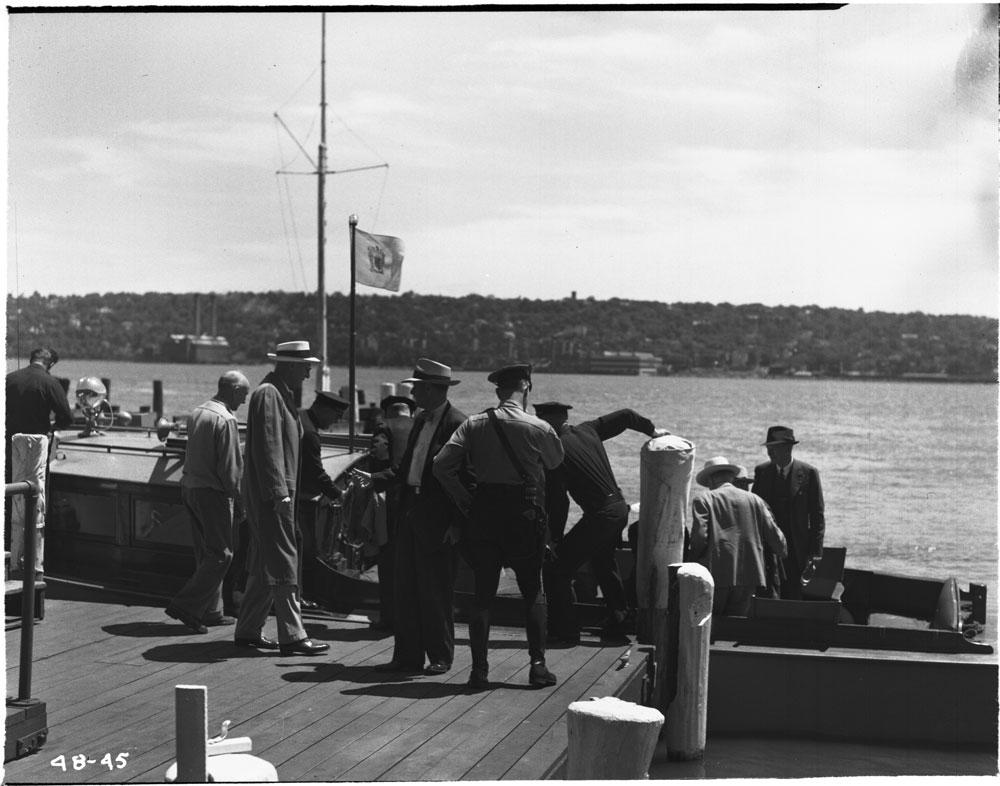
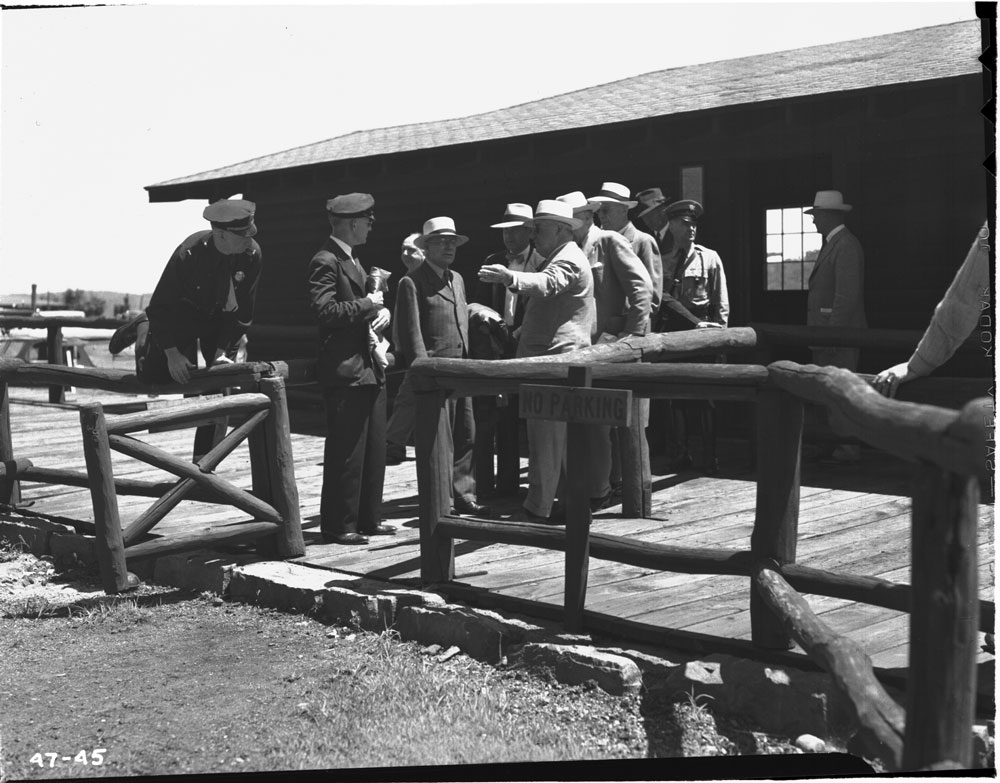
In his own words, Rockefeller addressed the Palisades Interstate Park Commission as he donated land valued at $21,158,475 in 1933 (worth over $427 million in 2022):
My primary purpose in acquiring this property was to preserve the land lying along the top of the Palisades from any use inconsistent with your ownership and protection of the Palisades themselves. It has also been my hope that a strip of this land of adequate width might ultimately be developed as a parkway, along the general lines recommended by the Regional Plan Association, Inc. I understand that plans for such a parkway have now been prepared by your Commission and that you feel there is some likelihood at the present time of obtaining funds for the commencement of construction work, as a result of the recent legislation adopted for industrial recovery and the relief of unemployment. [Emphasis added.]
A trillionaire in today’s money would not do all this to sell a little more Standard Oil, as some tellers of the “Rockefeller made this park” tale suggest. Instead, Rockefeller’s motives in buying this land were to share it with the public, as well as make larger sections of the country accessible to more people. The completion of the George Washington Bridge began this process, and it was Rockefeller’s hope that an Interstate Parkway would democratize the wilder sections of the country, as well as employing those during an economic depression. John Muir, the famed environmentalist, agreed with Rockefeller on the role road systems played in park systems across America.
Because we lacked the requirements needed for Federal grant money for the construction of the Palisades Interstate Parkway, the project was halted. After this setback, Rockefeller Jr. was heavily involved in making our park Federally recognized with a new charter in 1938. He had invested into a park which, while unable to complete a highway, was employing hundreds through New Deal programs like the CCC and WPA. The New Jersey section of the Palisades Interstate Parkway was unable to be constructed for another twenty years, and the motoring public could not connect to New York sections within the New Jersey Palisades. But Rockefeller Jr.’s vision eventually came true when the parkway was finished in 1957. His involvement actively shaped countless park layouts, including the Palisades.
John D. Rockefeller Jr. nurtured natural spaces across the country and acted as a public servant for these organizations — whether he could see them from his mansion window or not.
– Francesca Costa –

